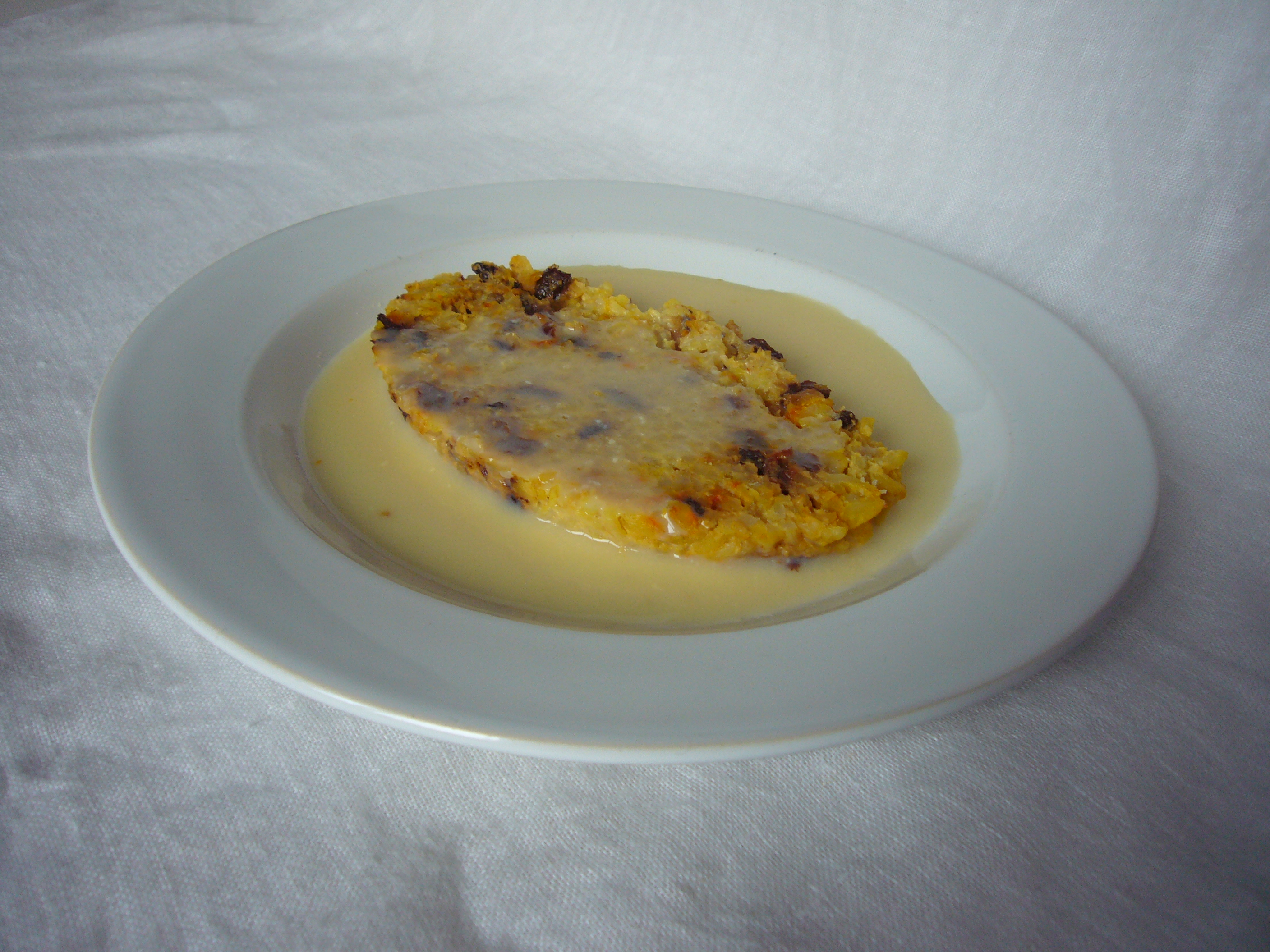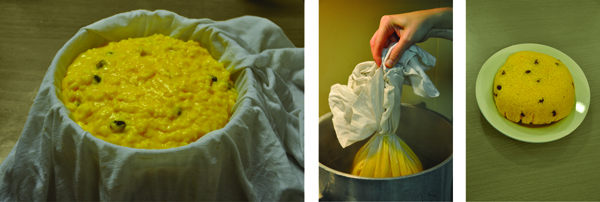Rice-Pudding

 Not knowing what kinds of rice were available in Sweden in the 18th century,
Not knowing what kinds of rice were available in Sweden in the 18th century,
I have made this with pudding rice as well as long-grain rice, both works.
210 g rice
250 ml water
330 ml milk
6 eggs
330 ml clarified butter
3 tbsp sugar
pinch of salt
1 g saffron
100 ml raisins
50 ml currants
Scald the rice, boil in water on a very low heat, and when that has been absorbed ad milk. Meanwhile combine eggs beaten to a foam, clarified butter, sugar and salt in a bowl. Depending on how heaped your tablespoons are the amount of sugar can be up to 100 ml. They whom it pleases can add raisins, currants and saffron. To parboil raisins and currants; bring to the boil and quickly drain them. This cleanses the dried fruit and removes toughness of the skin. Use some of the sugar to help grind saffron in a pestle and mortar before adding it. When the grains are once again hard, incorporate well with the egg mixture while they are still warm, and leave to cool. This lets the rice absorb all the goodness of the other ingredients. I left it in the refrigerator over night. Then in a water wrung, tightly tied napkin boil in salted water for 2 hours. The 18th century napkin is a tightly woven 80 – 90 cm squared linen cloth. An old but clean kitchen towel will do. I have seen an illustration of a pudding hanging from a string into a cauldron over an open fire. Another way of hindering the pudding from coming in contact with the bottom of the pot is to place a turned over plate on the pot bottom. Boiling water is added trough out the two hours, making sure the bundle is submerged at all times. When it is taken out of the pot, let it cool for a while before you loose it from the napkin onto the serving plate. Serve with the wine sauce.
Wine-sauce
330 ml of wine and 170 ml of water are brought to a boil with a piece of sugar and some ground (using a mortar and pestle) mace blades, 3 well beaten egg yolks are whisked in so that it does not curdle. This sauce is best served with puddings and cakes and can be made with any kind of berry cordial you please, instead of vine.
Source: Rückersköld 1796, p. 204, 144
